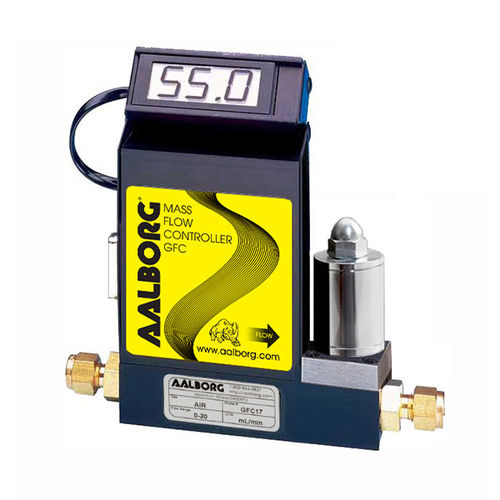• ± 1% FS accuracy is standard
• rigid metallic construction
• leak integrity 1 x 10-9 sccs of helium
• NIST traceable certification
• built-in tiltable LCD readout (some models)
• local or remote setpoint control
• 0-5 Vdc and 4-20 mA signals
• circuit protection
• totalizer option
The GFC combines the characteristics, and accuracy of conventional mass flow devices into a unique compact design at low costs previously unattainable. Each of these controllers incorporates an advanced "U"-shape tube sensor in conjunction with flow passage elements constructed of aluminum and brass for non-corrosive gases or 316 stainless steel for corrosive applications. Zero and span adjustments are accessible from the outside of transmitters.
Principles of Operation
Metered gases are divided into two laminar flow paths, one through the primary flow conduit, and the other through a capillary sensor tube. Both flow conduits are designed to ensure laminar flows and therefore the ratio of their flow rates is constant.
Two precision temperature sensing windings on the sensor tube are heated, and when flow takes place, gas carries heat from the upstream to the downstream windings. The resultant temperature differential is proportional to the change in resistance of the sensor windings.
A Wheatstone bridge design is used to monitor the temperature dependent resistance gradient on the sensor windings which is linearly proportional to the instantaneous rate of flow.


